This webinar shows some new features of RFEM 6 and RSTAB 9.
Time Schedule:
00:00 Introduction
06:20 Overview of the new features in RFEM 6 / RSTAB 9, new stand-alone programs and add-ons
10:15 Live presentation of new features in RFEM 6 and RSTAB 9
This webinar shows some new features of RFEM 6 and RSTAB 9.
Time Schedule:
00:00 Introduction
06:20 Overview of the new features in RFEM 6 / RSTAB 9, new stand-alone programs and add-ons
10:15 Live presentation of new features in RFEM 6 and RSTAB 9



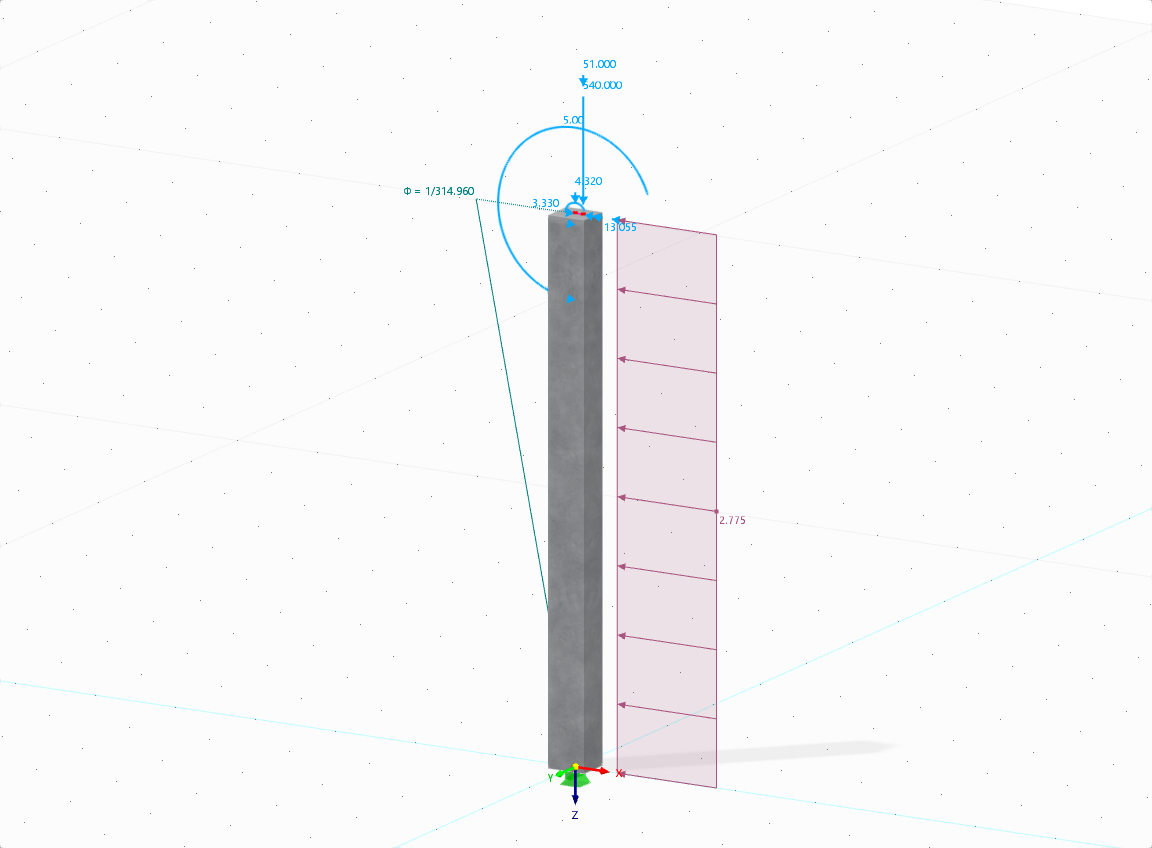
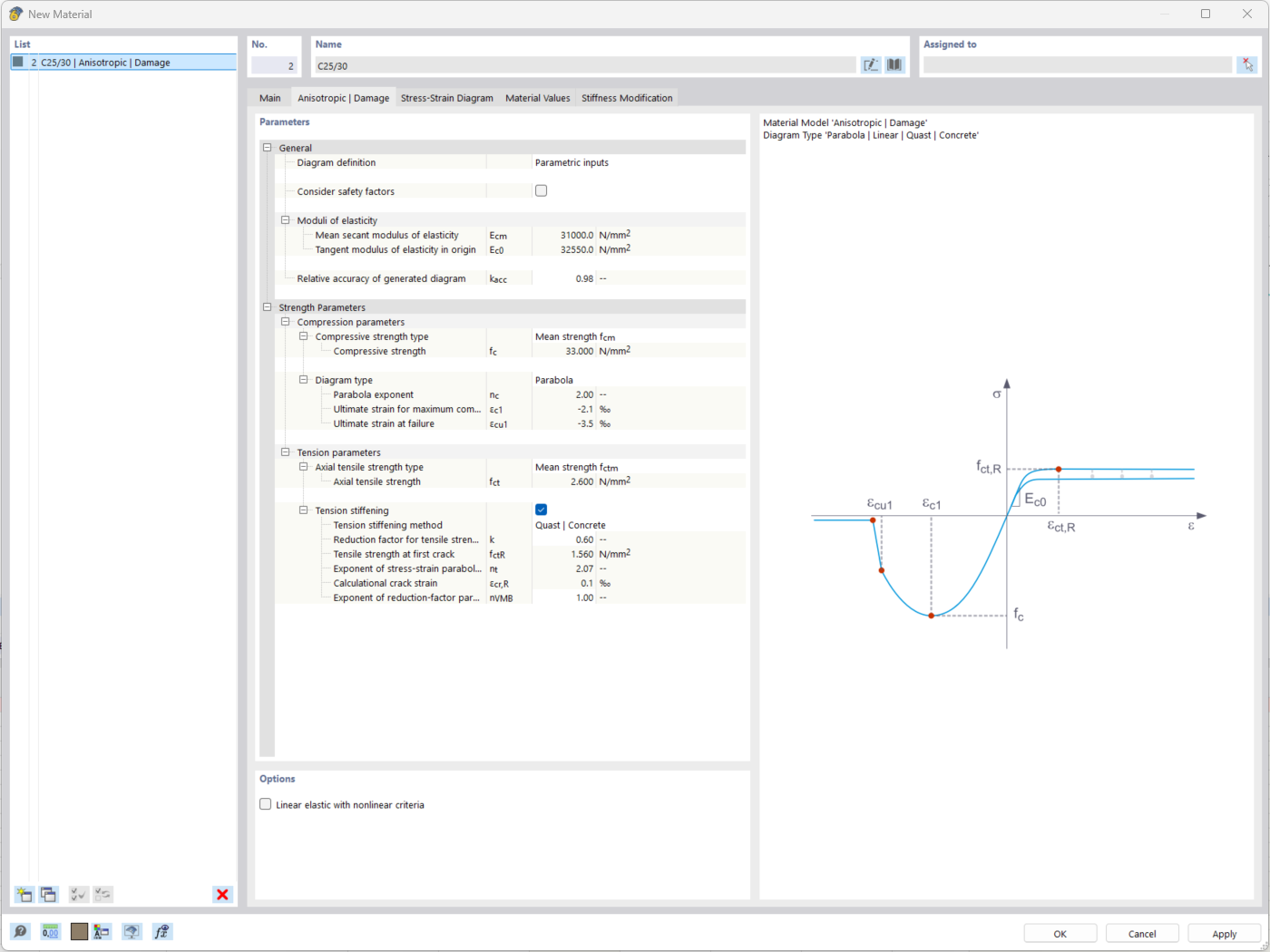
The "Nonlinear Material Behavior" add-on includes the Anistropic | Damage material model for concrete structural components. This material model allows you to consider concrete damage for members, surfaces, and solids.
You can define an individual stress-strain diagram via a table, use the parametric input to generate the stress-strain diagram, or use the predefined parameters from the standards. Furthermore, it is possible to consider the tension stiffening effect.
For the reinforcement, both nonlinear material models "Isotropic | Plastic (Members)" and "Isotropic | Nonlinear Elastic (Members)" are available.
It is possible to consider the long-term effects due to creep and shrinkage using the "Static Analysis | Creep & Shrinkage (Linear)" analysis type that has been recently released. Creep is taken into account by stretching the stress-strain diagram of the concrete using the factor (1+phi), and shrinkage is taken into account as the pre-strain of the concrete. More detailed time step analyses are possible using the "Time-Dependent Analysis (TDA)" add-on.
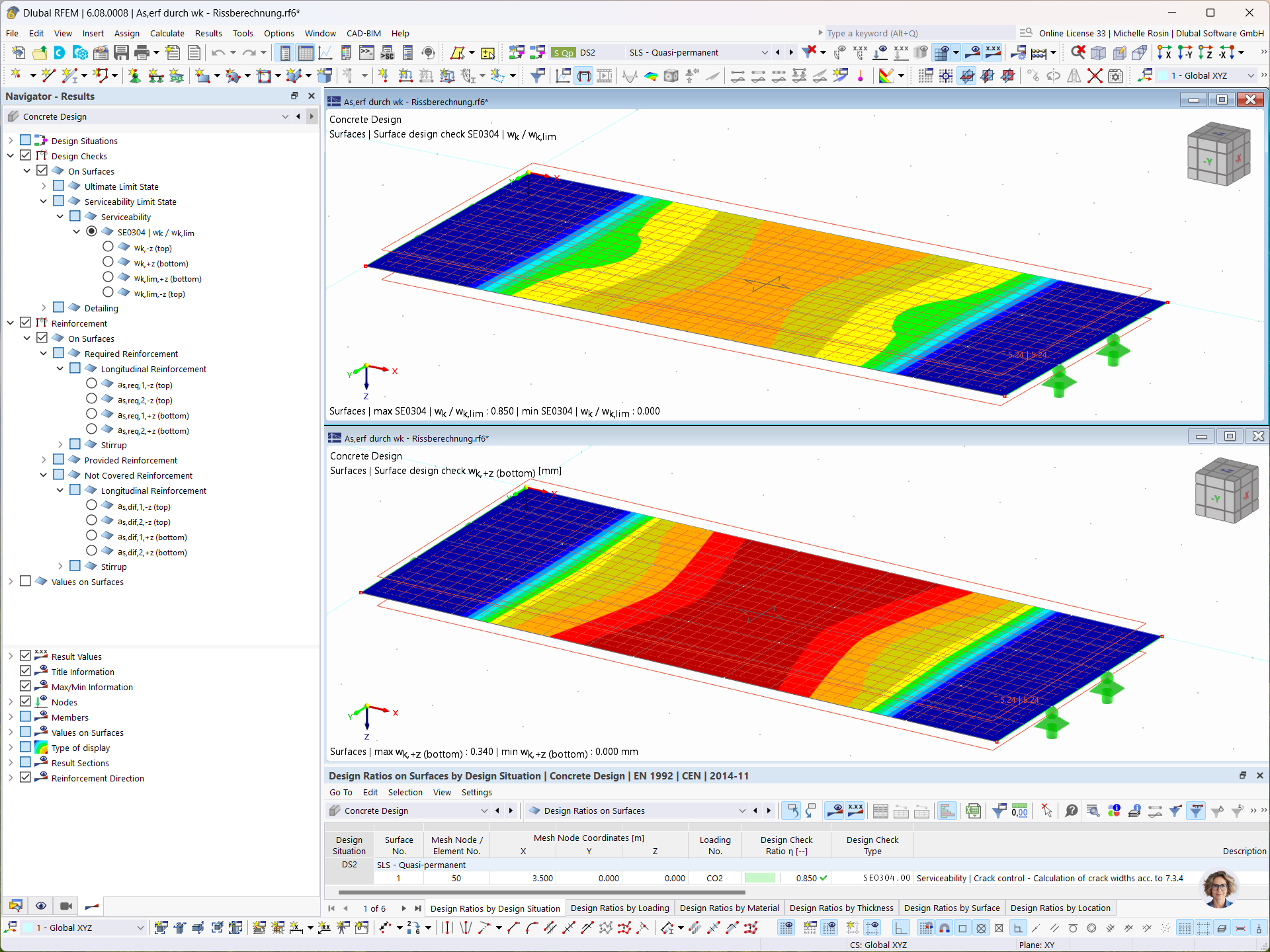
In the Concrete Design add-on, you can determine the required longitudinal reinforcement for the direct crack width analysis (w k).
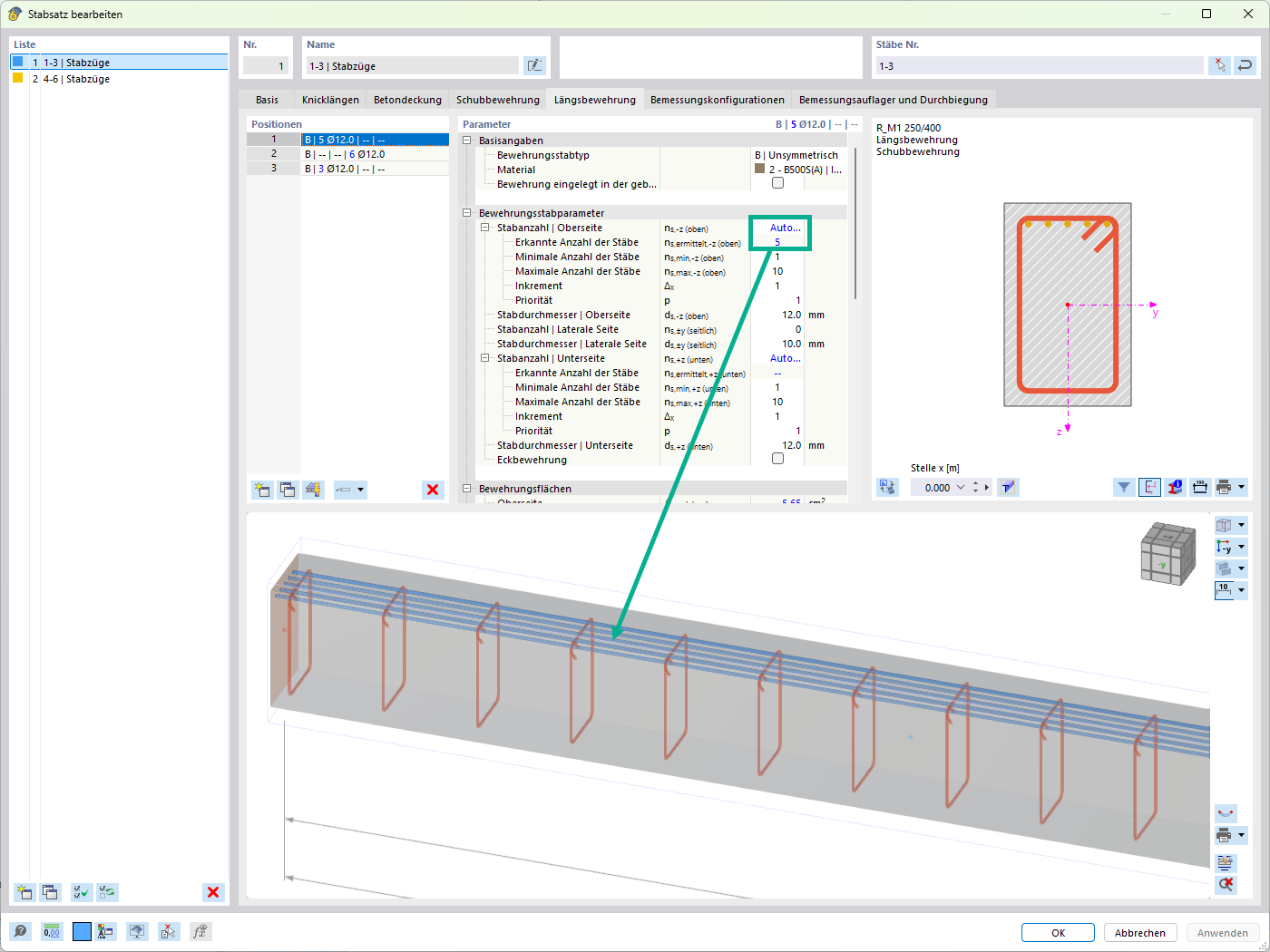
For the design of reinforced concrete members, there is the option to automatically determine the number or diameter of rebars.
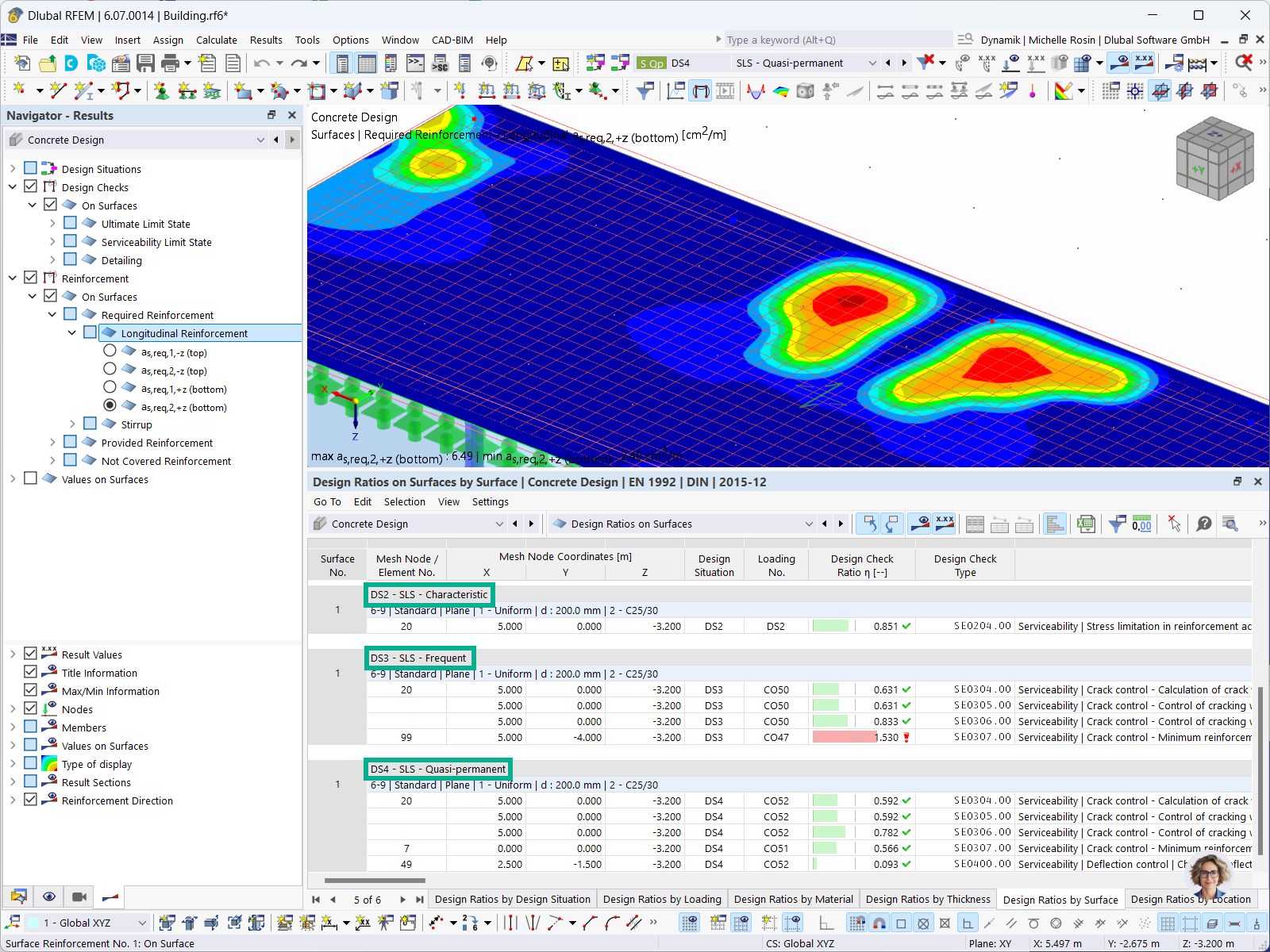
For concrete design, you can display the reinforcement results in tables separately by design situation.